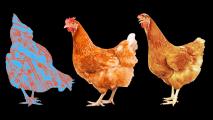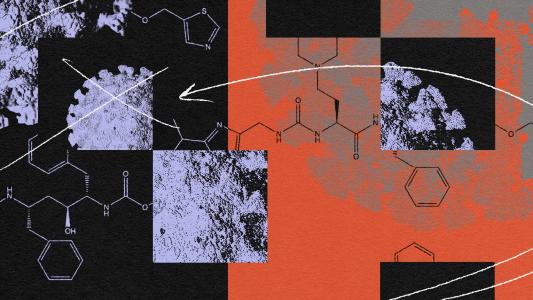This article is an installment of Future Explored, a weekly guide to world-changing technology. You can get stories like this one straight to your inbox every Thursday morning by subscribing here.
A first-of-its-kind vaccine for COVID-19 has just been approved in Japan — and it could signal a new era in how we prevent infectious diseases and even treat cancer.
The mRNA revolution
Your immune system knows how to hold a grudge. The first time a virus or other pathogen shows up to wreak havoc on your health, your body takes note of the intruder, creating antibodies and T cells that will attack the microbe on sight if it appears again in the future.
Antigens play a key role in the process — they’re the specific part of the foreign body that your immune system learns to recognize. In the case of COVID-19, for example, the coronavirus’s spike protein is an antigen.
Vaccines protect you by introducing your body to a new antigen in a way that can’t cause infection. This means you get the benefit of antibodies and T cells targeting the pathogen without having to actually get sick.
For more than 200 years, all of our vaccines contained actual antigens, but that changed with the arrival of mRNA vaccines for COVID-19. Rather than including the spike protein itself, these vaccines contain genetic instructions that tell your body to make the protein.
As we saw with the COVID-19 shots, mRNA vaccines can be highly effective. They can be designed and manufactured more quickly and at lower cost than other types of vaccines, too, but they’re also more likely to cause side effects, like fatigue, headaches, and muscle aches.
The next evolution
Japanese regulators have now authorized ARCT-154, a new COVID-19 vaccine created by Arcturus Therapeutics (a California-based vaccine developer) and CSL (an Australian biotech firm), making it the first fully approved self-amplifying RNA (saRNA) vaccine.
Like mRNA shots, saRNA vaccines contain the genetic instructions for making an antigen. The difference is they also trigger the body to produce an enzyme that makes copies of the antigen mRNA.
“It’s a bit like having a manufacturing facility, and instead of having one copy of the recipe, you have multiple copies that you can hand round to multiple production lines within the cell to produce more protein,” Robin Shattock, a vaccinologist at Imperial College London, who isn’t involved with ARCT-154, told Reuters.
“You have to find the optimal dose of the self-amplifying RNA in combination with the right delivery system.”
Niek Sanders
The hope of saRNA vaccine developers has been that this would allow them to get the same efficacy with smaller doses of vaccine. That could mean cheaper shots and the ability to manufacture more of them in a shorter period of time, which could be hugely beneficial in a future pandemic. Smaller doses might also mean fewer side effects, which could encourage more people to stay up-to-date with their vaccinations.
However, getting saRNA vaccines out of the lab has been a challenge for a few reasons.
A big one is the fact that saRNA itself is longer than mRNA, which complicates manufacturing and delivery. Another challenge is testing: it’s easier to accidentally design oversized doses, given the self-replicating nature of the shots. Too much vaccine can overstimulate the immune system in ways that can lead to toxic side effects and reduced efficacy.
“You have to find the optimal dose of the self-amplifying RNA in combination with the right delivery system,” Niek Sanders, scientific founder of saRNA vaccine developer Ziphius Vaccines, told Nature.
People who received the saRNA vaccine as a booster had higher levels of COVID-neutralizing antibodies.
Arcturus and CSL appear to have found the right combination with ARCT-154, leading to a major milestone in the field of saRNA vaccines.
On November 27, Japan approved their shot as both an initial COVID-19 vaccine and a booster for people over the age of 18. While India approved a different saRNA vaccine for COVID-19 in 2022, it was only on an “emergency use” basis — ARCT-154 is the first fully authorized saRNA vaccine.
Japan based its approval on data from several trials, including one in which more than 800 people received either a 5-microgram dose of the saRNA shot or a 30-microgram dose of Pfizer/BioNTech’s COVID-19 vaccine as a booster.
According to a preprint paper shared on medRXiv, four weeks later, those who received the ARCT-154 booster had higher levels of COVID-neutralizing antibodies. Side effects, meanwhile, were about equal between the two groups.
“This approval for the sa-mRNA COVID-19 vaccine is a major achievement.”
Joseph Payne
An ongoing study involving 16,000 people in Vietnam, meanwhile, tested the shot as an initial vaccine series.
It found that two 5-microgram doses, delivered 28 days apart, are 56% effective at preventing COVID-19 and 95% effective against severe COVID-19, according to another preprint paper. Most cases at the time of this study were due to the Delta variant, and side effects were mild to moderate.
The results of these studies are expected to be printed in peer-reviewed journals before the end of 2023. Arcturus and CSL will now focus on getting the shot approved by European authorities — that decision is expected in 2024.
“We are proud of the role that Arcturus has played in this collaboration to develop and validate the first approved sa-mRNA product in the world,” said Joseph Payne, CEO of Arcturus Therapeutics. “This approval for the sa-mRNA COVID-19 vaccine is a major achievement.”
Beyond COVID-19
Given that we’ve had effective COVID-19 vaccines for years now, the approval of ARCT-154 isn’t likely to be a gamechanger for the coronavirus, but it does prove that saRNA vaccines can be safe and effective.
“This will hopefully begin to put a nail in the coffin of the idea that self-amplifying RNA is not a viable platform,” Corey Casper, president and CEO of the non-profit Access to Advanced Health Institute, told Nature.
As for what we might use saRNA vaccines for, Pfizer already has an saRNA flu vaccine in clinical trials, and shots to prevent Zika, RSV, and other diseases have shown promise in preclinical studies.
Future saRNA vaccines could also prove to be powerful weapons in the fight against cancer.
Unlike vaccines for viruses, cancer vaccines are typically used to treat the disease, not prevent it (though there are exceptions), and most work by using a bit of a person’s own cancer as the antigen, helping their immune system identify and attack their cancer.
If saRNA platforms can lead to smaller, cheaper cancer vaccine doses with potentially fewer side effects, they could be huge in the battle against the disease responsible for nearly 20% of deaths worldwide.
We’d love to hear from you! If you have a comment about this article or if you have a tip for a future Freethink story, please email us at [email protected].






